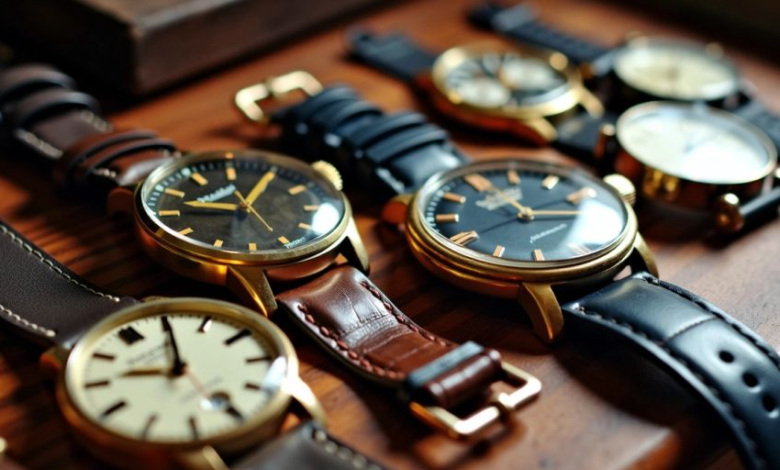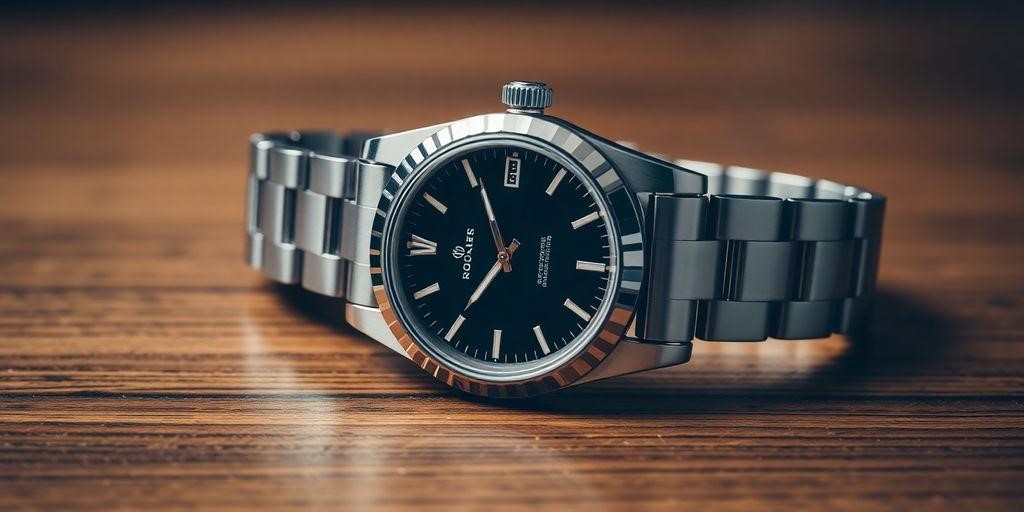How to Care for Your Vintage Watch Collection: Tips from Experts

Vintage watches, especially Rolex models, are not just timepieces; they are pieces of art and history. Caring for them is crucial to maintaining their beauty and value. Whether you’re a seasoned collector or just starting, understanding how to properly care for your vintage watch collection can enhance its lifespan and keep it looking great.
Understanding the Value of Vintage Rolex Watches
Vintage Rolex watches are not just timepieces; they are pieces of history. Their value can vary greatly based on several factors. Understanding these factors can help you appreciate your collection more. However, the market is also flooded with replica Rolex watches, which can sometimes make it difficult to distinguish genuine pieces from imitations. Being able to identify a replica Rolex is crucial for protecting the authenticity and value of your vintage collection.
See also: How to Start a Watch Brand: Collaborating with an OEM Watch Manufacturer
Investment-Level Vintage Watches
- These watches are often rare and sought after.
- They can appreciate significantly over time.
- Examples include models like the Paul Newman Daytona, which can sell for millions.
Everyday Vintage Watches
- These are more accessible and can be worn daily.
- They may not have the same investment potential but still hold sentimental value.
- Examples include older Datejust models, which are reliable and stylish.
Priceless Vintage Watches
- These watches often have deep personal significance.
- They may be family heirlooms passed down through generations.
- Their value is often beyond monetary worth, tied to memories and stories.
Proper Storage Techniques for Vintage Watches
Using Original Boxes
When storing your vintage watch, always use the original box if you have it. This helps protect the watch from dust and scratches. If the original box is not available, consider using a soft pouch or a dedicated watch case.
Avoiding Watch Winders
It’s best to avoid using watch winders for vintage watches. These devices keep the watch constantly wound, which can wear out the lubrication inside. Instead, store your watch flat in a drawer or its box when not in use.
Storing in a Dry Environment
Make sure to keep your vintage watches in a dry place. Humidity can damage the internal mechanisms. Here are some tips for maintaining a dry environment:
- Use silica gel packets in the storage area to absorb moisture.
- Store watches in a climate-controlled room.
- Avoid basements or attics where humidity levels can fluctuate.
Keeping your vintage watch safe from moisture and dust is crucial for its longevity. Regularly check the storage area to ensure it remains dry and clean.
Regular Maintenance and Servicing
Choosing the Right Service Provider
When it comes to vintage watches, selecting a qualified watchmaker is crucial. Here are some tips:
- Look for certified professionals who specialize in vintage timepieces.
- Check reviews and ask for recommendations from fellow collectors.
- Ensure they have experience with the specific brand of your watch.
Frequency of Servicing
Regular servicing is essential to keep your vintage watch in good shape. Here’s a simple guideline:
- Every 3 to 5 years: Most vintage watches should be serviced within this timeframe.
- Every 10 years: Rolex recommends a full service every decade.
- As needed: If you notice any issues, such as irregular timekeeping, seek service immediately.
Specific Instructions for Servicing
When you take your watch for servicing, consider these important points:
- Request a complete cleaning and oiling of the movement.
- Ask for a thorough inspection to identify any potential issues.
- Ensure that the watchmaker uses appropriate lubricants to avoid damage.
Regular maintenance is key to preserving the beauty and functionality of your vintage watch. Without it, even the finest timepieces can suffer from wear and tear.
Handling and Wearing Your Vintage Watch
Avoiding Accidental Impacts
- Be gentle when wearing your vintage watch. These timepieces are often more fragile than modern ones.
- Avoid wearing your watch during activities that could cause it to bump or hit hard surfaces.
- Consider leaving your watch at home if you plan to engage in sports or strenuous activities.
Being Careful Around Water
- Vintage watches are not designed to withstand water like modern watches.
- Always remove your watch before swimming or showering to prevent water damage.
- Check for any signs of wear on gaskets, as they may not provide adequate protection against moisture.
Cleaning and Polishing Tips
- Keep your watch clean by wiping it down with a soft cloth regularly.
- Avoid using harsh chemicals or abrasive materials that could scratch the surface.
- If you need to set the time, do it in a clean, dry place to prevent dust from entering the movement.
Remember: Taking care of your vintage watch means treating it with respect and caution. It’s not just a timepiece; it’s a piece of history.
Common Issues and How to Address Them
Vintage watches can face several common problems. Understanding how to deal with these issues is essential for maintaining your collection.
Dealing with Scratches and Scuffs
- Be gentle: Vintage watches are more fragile than modern ones. Avoid rough handling.
- Use a microfiber cloth: This helps clean the surface without causing more scratches.
- Consider professional polishing: If scratches are deep, a professional can help restore the watch’s shine.
Managing Water Resistance
- Check seals regularly: Water resistance can weaken over time. Make sure seals are intact.
- Avoid water exposure: If unsure about the watch’s water resistance, keep it away from water.
- Get a pressure test: A watchmaker can test the water resistance to ensure it’s safe to wear in wet conditions.
Handling Mechanical Problems
- Listen for unusual sounds: If you hear strange noises, it may indicate a problem.
- Wind regularly: For manual watches, winding them often keeps the movement lubricated.
- Seek professional help: If issues persist, consult a certified watchmaker for repairs.
Regular care and attention can help prevent many common issues with vintage watches. Always prioritize gentle handling and professional servicing.
The Importance of Authenticity and Provenance

When it comes to vintage watches, authenticity, and provenance are key factors that can greatly affect their value. Knowing the history of your watch can help you understand its worth and ensure you are making a smart investment. For those who enjoy personalizing their vintage pieces, a Seiko mod can be an exciting option. By modifying a vintage Seiko, collectors can enhance its appeal while still preserving its unique character, making it both a stylish and valuable addition to their collection.
Verifying Authenticity
- Always check for original parts. Replacing parts can lower the watch’s value.
- Look for serial numbers and model numbers that match the brand’s records.
- Get a professional appraisal to confirm authenticity.
Understanding Provenance
- Provenance refers to the history of ownership. A watch with a famous previous owner can be worth more.
- Documentation, such as original purchase receipts or service records, can enhance a watch’s provenance.
- Provenance can also include the watch’s condition and any repairs it has undergone.
Impact on Value
- Watches with verified authenticity and strong provenance typically sell for higher prices.
- A watch with a questionable history may be harder to sell in the future.
- Collectors often prefer watches with clear and documented histories.
Knowing the authenticity and provenance of your vintage watch not only protects your investment but also adds to the story behind it.
Tips for Buying Vintage Rolex Watches

Researching the Market
- Understand the different types of vintage Rolex watches. There are investment-level, everyday, and priceless models.
- Check online forums and watch communities to learn about current trends and prices.
- Follow reputable dealers and auction houses to see what similar watches are selling for.
Inspecting the Watch
- Look for authenticity. Be cautious of fake Rolex watches; always check serial numbers and model numbers.
- Examine the watch closely for any signs of wear or damage. Vintage watches can have unique characteristics that add to their value.
- Ask for service history. Knowing how well the watch has been maintained can help you gauge its condition.
Negotiating the Price
- Be prepared to walk away. If the price doesn’t feel right, don’t hesitate to look elsewhere.
- Use your research to justify your offer. If you know the market value, you can negotiate more effectively.
- Consider the seller’s motivation. If they need to sell quickly, you might get a better deal.
Remember, buying a vintage Rolex is not just about the watch itself; it’s about the story and history behind it. Take your time to find the perfect Rolex that speaks to you.
Final Thoughts on Caring for Vintage Watches
Taking care of your vintage watch collection is not just about keeping them looking nice; it’s about preserving their history and value. Remember to handle them gently, as they are more fragile than modern watches. Regular servicing is key, but make sure to communicate your wishes to the watchmaker. Store them properly, avoiding watch winders, to keep their mechanisms safe. With a little love and attention, your vintage watches can last for many more years, telling stories of the past while adding charm to your style.
Frequently Asked Questions
What makes vintage Rolex watches special?
Vintage Rolex watches are unique because they combine history, craftsmanship, and style. Many collectors appreciate their rarity and the stories behind them.
How should I store my vintage watch?
It’s best to keep your vintage watch in its original box or lay it flat in a drawer. Avoid using watch winders as they can damage the watch.
How often should I service my vintage watch?
You should have your vintage watch serviced every two to three years to keep it running well and to replace old oils.
Can I wear my vintage watch every day?
While you can wear your vintage watch daily, be careful to avoid bumps and water, as they can damage older watches.
How do I clean my vintage watch?
Use a soft cloth to gently wipe the watch. If there are scratches on the crystal, you can use a product like PolyWatch to help remove them.
What should I do if my vintage watch stops working?
If your vintage watch stops, it’s best to take it to a professional watchmaker for a check-up, as there may be internal issues that need fixing.



